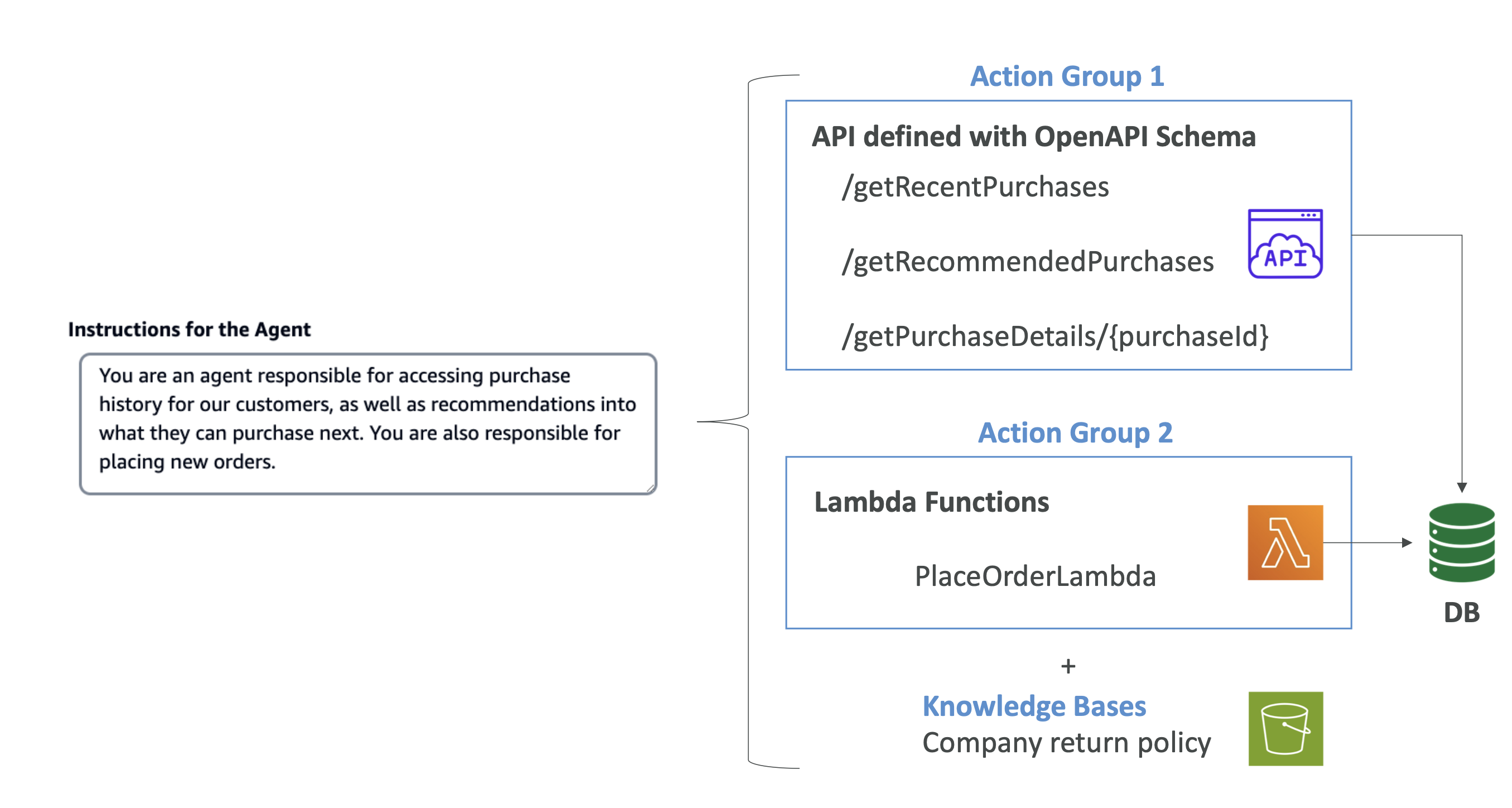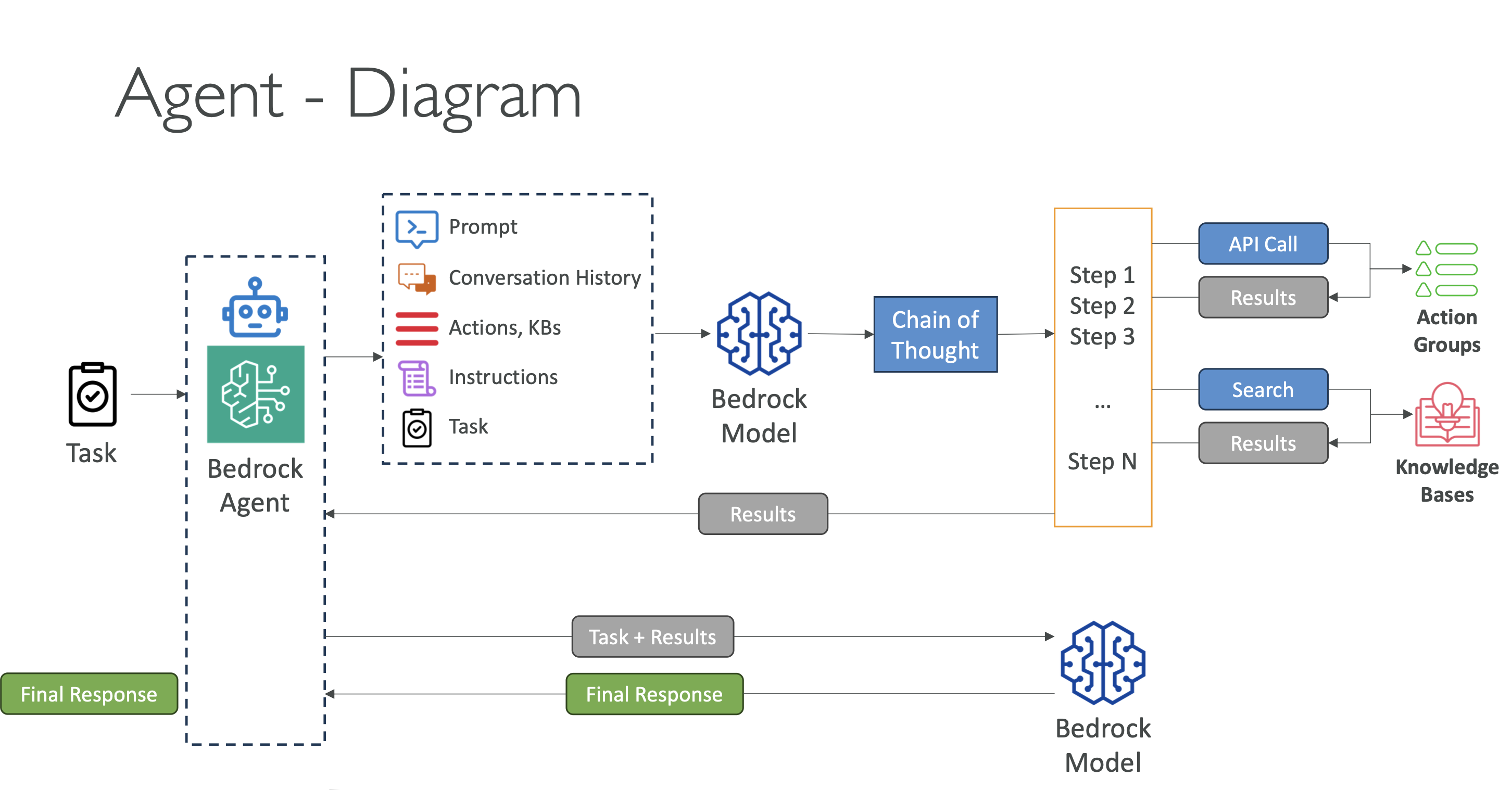AWS Certified AI Practitioner(10) - Agents
🤖 Amazon Bedrock – Agents
📌 What Are Agents?
Agents in Amazon Bedrock are advanced components that can think, plan, and act on multi-step tasks.
Unlike regular models that only provide answers, agents can perform real actions such as:
- Provisioning infrastructure
- Deploying applications
- Executing operations on systems
- Interacting with APIs, databases, and knowledge bases

🔑 Key Features of Bedrock Agents
- Multi-step task execution: Agents can follow a sequence of steps to complete complex workflows.
- Task coordination: Ensure actions are executed in the correct order and data is passed between tasks properly.
- Action groups: Agents are configured with specific action groups (APIs, Lambda functions, etc.) to perform defined tasks.
- System integration: Connect with databases, services, APIs, and AWS Lambda for real operations.
- Knowledge base access: Retrieve business policies or FAQs (e.g., return policies) to give accurate answers.
- RAG (Retrieval-Augmented Generation): Fetch external data when necessary to enhance responses.
- Tracing & debugging: See step-by-step execution history to improve reliability.
⚙️ How Agents Work (Behind the Scenes)
- Task Received – Agent looks at user request + conversation history.
- Evaluate Context – Agent checks available action groups, APIs, knowledge bases.
- Plan (Chain of Thought) – Bedrock model generates a step-by-step plan:
- Step 1: Call API → get purchase history
- Step 2: Query knowledge base → check return policy
- Step 3: Use Lambda → place order
- Execute Steps – Agent carries out the plan automatically.
- Synthesize Final Answer – Another model combines results into a clear user response.
- Tracing Available – Developers can view the steps for debugging.

🛠️ Example Use Cases
1. E-commerce Assistant
- User asks: “What did I purchase last month, and can you recommend something new?”
- Agent actions:
- Call API → get purchase history
- Query recommendation system → suggest new products
- Provide final recommendation to user
2. Infrastructure Automation
- User asks: “Set up a new application environment.”
- Agent actions:
- Provision AWS infrastructure
- Deploy the app using Lambda functions
- Verify deployment status
📝 Summary Table
| Category | Explanation | Example |
|---|---|---|
| Purpose | Automate multi-step tasks using AI | Provision servers, deploy apps |
| Task Coordination | Ensure correct order & pass info between tasks | Step 1: Fetch → Step 2: Deploy |
| Action Groups | Pre-defined sets of APIs or Lambda functions | Get Purchase History, Place Order |
| Integration | Works with systems, services, DBs, APIs | Call backend API, update DB |
| Knowledge Base | Fetch company policies or FAQs | Return policy lookup |
| RAG | Retrieve extra data for better responses | Pull shipping info dynamically |
| Tracing | View step-by-step execution | Debugging failed steps |
✅ Why Use Bedrock Agents?
- Automation → Reduce manual work in infrastructure, apps, and operations.
- Scalability → Handle complex workflows with minimal coding.
- Accuracy → Use RAG + knowledge bases to give context-aware answers.
- Flexibility → Works with APIs, Lambda, and external systems.
- Transparency → Tracing ensures visibility and debugging.
👉 In summary:
Amazon Bedrock Agents are like AI-powered assistants that don’t just answer questions, but take actions, follow multi-step plans, integrate with real systems, and provide trustworthy, automated outcomes.
All articles on this blog are licensed under CC BY-NC-SA 4.0 unless otherwise stated.
